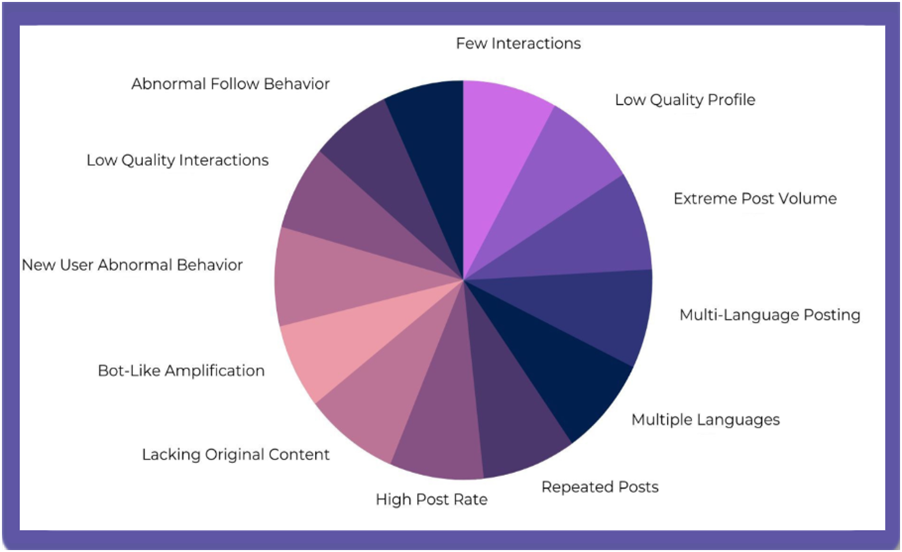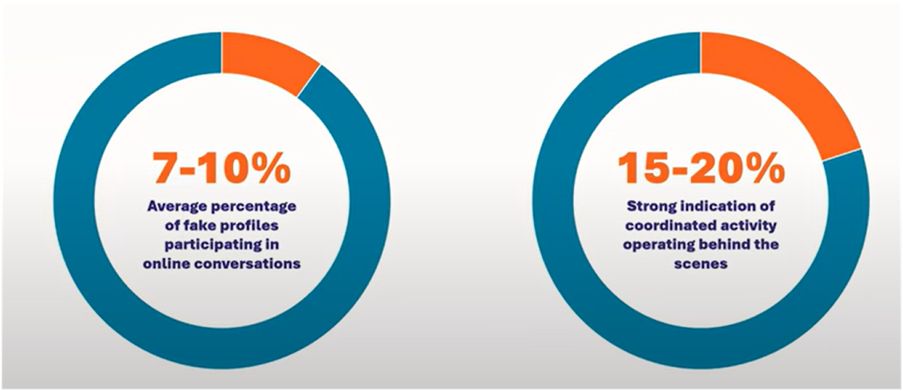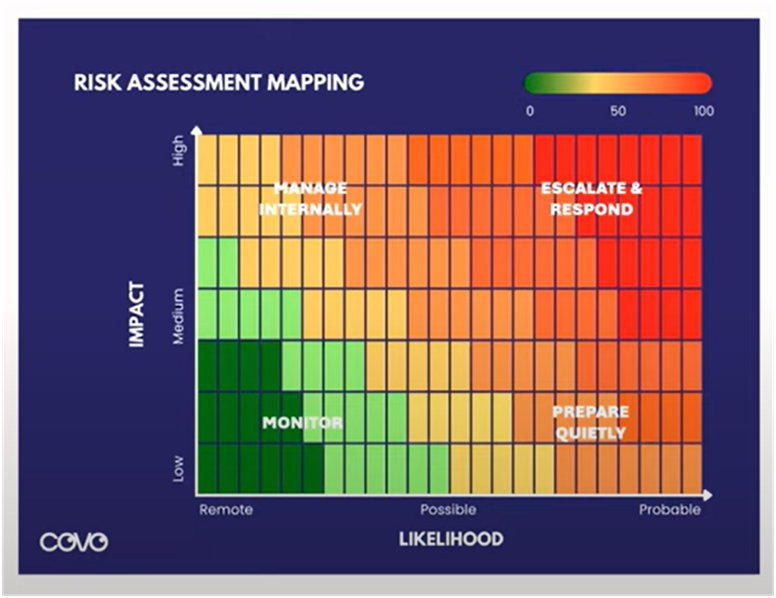In recent years, brands have faced unprecedented challenges in managing their online reputations.
Here are the facts: Outrage on social media is no longer purely organic. It is increasingly engineered through bot-driven attacks and viral disinformation campaigns that can catch even the most prepared organizations off guard. Understanding how to detect, assess, and respond to these crises is crucial for anyone involved in brand protection, crisis communication, or digital risk strategy.
This modern crisis playbook is designed to help brands navigate these complex social storms. Drawing on insights from industry expert Colby Vogt, Founder of Covo Intelligence, this guide breaks down the anatomy of online manipulation and offers practical strategies for detection, defense, and redemption.
This guide will cover:
- Why Traditional Crisis Management Tactics Are Outdated
- How to identify Bot-Driven Manipulation
- Understanding Why Bot Activity Matters
- Implementing the Shield Framework for Proactive Crisis Management
- Responding to a Brand Crisis: When and How
- Understanding the Threat Landscape: Who’s Behind Bot Attacks?
The Changing Nature of Crisis Response
Traditional crisis management often followed a straightforward path: identify the issue, draft a statement, and respond. However, today’s environment is far more chaotic and difficult to control. Real-time manipulation and coordinated bot activity create confusion, making it harder for brands to discern authentic backlash from engineered outrage.
One of the biggest challenges is distinguishing between real people and fake accounts – often bots – that amplify negative narratives. These fake accounts can respond to events within minutes, creating a false impression of widespread backlash. Recognizing this difference is critical in deciding whether and how to respond.
Signs of Bot-Driven Manipulation
Identifying bots can be tricky, but there are telltale signs to watch for:
- Low-quality or sparse profile information
- Extremely high volume of posts in a short time
- Few genuine interactions or engagement with other users
- Lack of original content, often reposting or sharing the same messages
- Coordinated behavior, such as accounts created simultaneously or sharing identical content
For brand managers overwhelmed by thousands of interactions, manual detection is impractical. AI-powered tools like those developed by Cyabra can help quickly identify suspicious activity, enabling teams to focus their efforts effectively.

Understanding Why Bot Activity Matters
According to Edelman’s Trust Barometer:
- 63% of people struggle to determine the credibility of information online
- 70% believe journalists sometimes intentionally mislead the public
- 74% trust “people like me” as much as scientists
Since bots mimic real individuals, they exploit this trust to spread misinformation and amplify outrage, making it harder for audiences to discern truth from manipulation.
The Scale and Impact of Coordinated Attacks
When we talk about disinformation, it’s important to understand that even a modest investment can fuel a large-scale attack. For as little as $10, malicious actors can purchase thousands of fake views, likes, and comments to artificially inflate outrage. This low barrier to entry makes brands vulnerable to rapid, large-scale manipulation.
On an average day, 7-10% of social media interactions around a brand may come from non-real accounts. When this figure spikes to 15-20%, it signals a coordinated attack. Monitoring these shifts allows brands to detect emerging crises early and respond strategically.

Proactive Crisis Management: The Shield Framework
In this new reality of crisis management, preparation is key. Brands should adopt a proactive approach to identify vulnerabilities and monitor risks before they escalate into full-blown crises. The Shield framework created by Covo offers a structured process:
- Risk Landscape Analysis and Mapping: Identify and prioritize potential risks based on their likelihood and potential impact on the brand.
- Early Detection: Continuously monitor social and traditional media for shifts in sentiment, narrative spread, and signs of coordinated activity.
- Risk Assessment: Separate signal from noise by evaluating credibility, momentum, and business impact, including bot involvement.
- Audience Pulse Testing: Gauge how different audiences perceive the issue and test potential response messages to avoid escalating the crisis.
- Response Strategy: Develop clear message maps, response plans, and live advisory support based on informed decisions.
This approach arms brands with actionable intelligence to respond effectively – or decide when to hold back.
The picture below shows how a risk assessment map should look, helping you prioritize issues.
- Vertical axis: Impact on brand/business (from low to high)
- Horizontal axis: Likelihood of occurrence (from remote to probable)

Issues in the high-impact, high-probability quadrant deserve close monitoring and immediate attention. Alerts should be set up to flag any significant shifts in conversation volume or sentiment.
Audience Insights and Pulse Testing: Why Data is Key
Understanding who is engaging with the crisis narrative is vital. Social media platforms provide demographic data that can indicate which audience segments are most affected. Pulse testing involves:
- Surveying target audiences to assess their awareness and concern
- Testing different messaging approaches to determine what builds trust or escalates tensions
- Refining communication strategies based on real audience feedback
This data-driven approach helps brands avoid reactive or tone-deaf responses. While gut instincts remain valuable, especially for seasoned professionals, they should always be informed and supported by data. Key metrics to consider include:
- Historical patterns of similar crises
- Percentage increases in negative sentiment or bot activity
- Audience engagement and demographic shifts
- Message testing outcomes
Combining data with experience creates a balanced approach that helps brands make confident, strategic decisions.
Message Testing: Crafting Effective Communication
Message testing involves evaluating different ways to communicate with audiences to maximize trust and minimize backlash. This can include:
- Comparing emotional tones (e.g., empathetic vs. formal)
- Assessing message relevance and believability
- Measuring impact on audience perception and trust
- Testing the order and phrasing of key points
Even small differences in wording can significantly influence audience response, making message testing a critical step before public communication.
Responding to a Brand Crisis: When and How
Response strategies generally fall into three categories:
- Stay Quiet: Sometimes the best response is no response, allowing time to pass and the issue to dissipate.
- Clarify Misinformation: Correct falsehoods or redirect the narrative without escalating the conflict.
- Engage Deliberately: Acknowledge real issues and communicate the steps being taken to address them.
A Simplified Decision Tree for Crisis Response
To guide decision-making, consider these questions:
- Where does this issue fall on the risk map? If low impact, continue monitoring. If high impact, proceed.
- Is the threat real or artificially amplified by bots? If amplified, hold and monitor to understand motives. If real, continue.
- Is the issue gaining traction with your core audience? If no, hold and monitor. If yes, continue.
- Is there clear factual misinformation? If yes, consider light correction. If no, proceed carefully.
- Will a response escalate or de-escalate the issue? Use audience pulse testing to decide whether to respond or stay quiet.
This framework emphasizes thoughtful, data-informed responses over knee-jerk reactions.
Redemption: Rebuilding Trust Through Actions
Words alone cannot rebuild trust; actions speak louder. When navigating the redemption phase, brands should focus on:
- Transparency: Clearly communicate the steps being taken and avoid hiding information.
- Consistency: Ensure all messaging across the organization aligns and supports the response strategy.
- Proof of Action: Demonstrate through tangible examples how the brand is living up to its promises.
- Documentation: Keep records of responses and prior credibility-building efforts to reinforce your position.
Common Pitfalls to Avoid
- Over-apologizing: Excessive apologies can imply greater blame and damage credibility.
- Reacting to Bad Actors: Engaging with bots or malicious accounts only fuels their activity.
- Inconsistent Messaging: Mixed messages confuse audiences and undermine trust.
- Disconnect Between Words and Actions: Saying one thing but doing another erodes credibility quickly.
Understanding the Threat Landscape: Who’s Behind Bot Attacks?
Cyabra’s experience proved that the origins of bot attacks are diverse and complex – ranging from state-backed entities to opportunistic individuals. Much like crime in the physical world, these actors include:
- State-sponsored groups
- Organized criminal networks
- Financially motivated actors targeting stock prices or market sentiment
- Competitors or disgruntled individuals
- Opportunistic lone wolves
These malicious actors exploit the open nature of social media to spread disinformation on topics from politics to consumer products, making every brand potentially vulnerable.
The Role of AI in Modern Manipulation
Advancements in AI technology have lowered the barriers for creating sophisticated fake accounts, automated bots, and even deepfake content. Malicious actors often leverage AI tools more aggressively than legitimate users, enabling rapid, coordinated responses that can dominate social conversations within minutes.
Conclusion: Navigating Crisis with Confidence
In 2025, as reputational crises are engineered and amplified by sophisticated bot networks, brands must evolve their approach to crisis management. By leveraging advanced detection tools, adopting structured frameworks like Shield, and grounding decisions in data and audience insights, organizations can better detect threats early, respond thoughtfully, and rebuild trust effectively.
Remember, the new crisis playbook is not just about reacting – it’s about preparing, discerning reality from manipulation, and taking deliberate, transparent actions that resonate with your audience.
With vigilance, strategy, and the right tools, brands can turn even the most volatile digital storms into opportunities for redemption and strengthened reputation.
___________
This playbook is based on a Cyabra live session guest starring industry expert Colby Vogt, Founder of Covo Intelligence,


